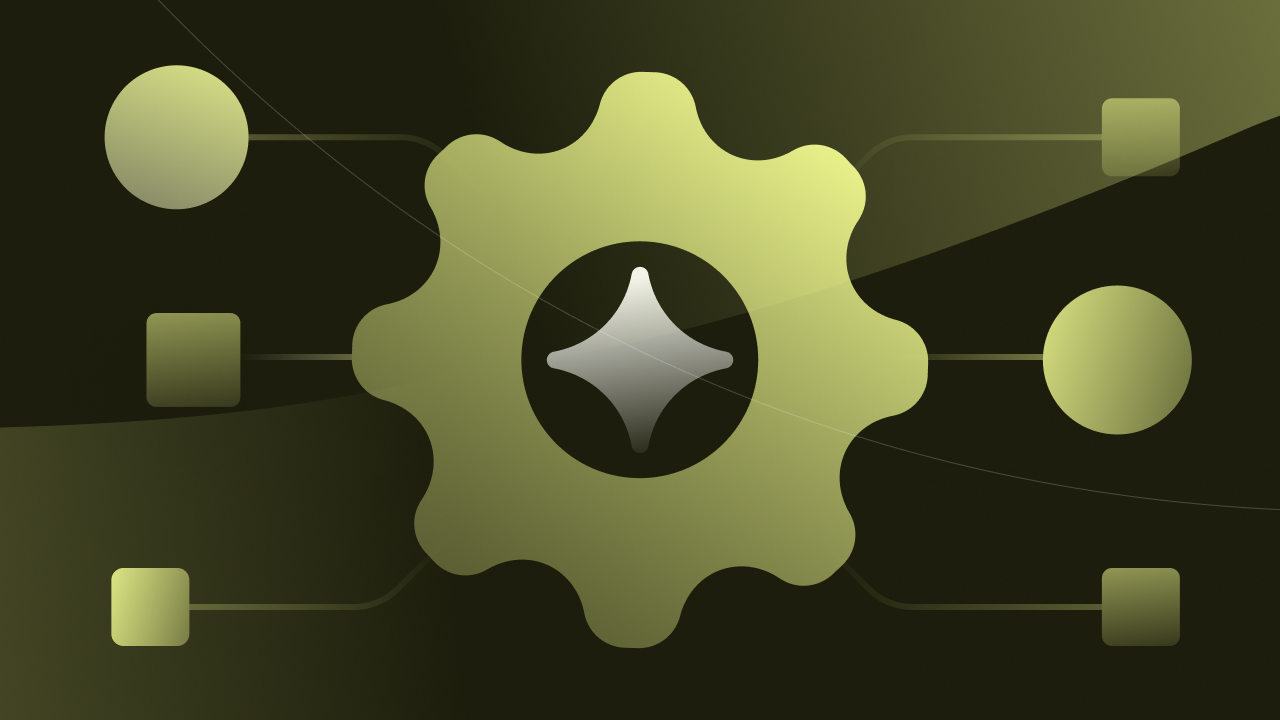
For organizations seeking ways to boost efficiency, the clear path forward involves embracing various process automation types. This article offers a precise, objective examination of these categories, their functionalities, and their role in achieving operational excellence. We’ll explore everything from foundational approaches to cutting-edge, AI-driven solutions, providing a comprehensive process automation guide.
At its heart, process automation uses technology to execute tasks or entire workflows with minimal human oversight. It’s a strategic necessity that frees human talent for more strategic, higher-value work, ensuring greater accuracy and speed. For corporate leaders tasked with digital transformation, grasping the nuanced differences among types of process automation is absolutely essential.
Business Process Automation (BPA)
Business Process Automation, or BPA, centers on streamlining entire business processes, moving beyond automating single tasks. It involves orchestrating various systems, applications, and data to automate complex, interconnected workflows. BPA solutions frequently integrate with enterprise resource planning (ERP) systems, customer relationship management (CRM) platforms, and other critical business applications.
BPA aims to optimize complete operational sequences. Think of managing accounts payable, from invoice receipt to final payment, or handling customer onboarding from first contact to service activation. These process automation systems are designed to improve efficiency across departments, ensure regulatory compliance, and enhance data integrity. Unlike simpler forms of automation, BPA seeks systemic improvements that align with an organization’s broader strategic objectives. It’s a holistic method for refining operations.
Robotic Process Automation (RPA)
Robotic Process Automation, known as RPA, automates repetitive, rule-based tasks by replicating human interaction with digital systems. Imagine software robots working tirelessly on a computer, mimicking human actions like clicking, typing, and navigating applications. This makes it one of the most recognized types of automation for specific, high-volume tasks. RPA distinguishes itself from other process automation types by operating primarily at the user interface level.
RPA performs exceptionally well where tasks are standardized and predictable. For instance, an RPA bot can automatically extract data from invoices, update spreadsheets, or reconcile information across different platforms. The simplicity of its deployment and quick return on investment make RPA an appealing first step for many organizations exploring automation. However, traditional RPA faces limitations when processes deviate from predefined rules or when underlying applications change. Understanding various RPA types helps in selecting the most suitable solution.
Diving Deeper into Robotic Process Automation
Within RPA, several distinct types of robotic process automation exist, each tailored for different automation scenarios. Recognizing these differences is vital for understanding how automation can be effectively applied and where more advanced capabilities might be necessary.
Front-End Automation (UI Automation)
Front-End Automation, also known as UI Automation, represents the most common form of RPA. It involves bots interacting directly with a graphical user interface (GUI), just as a human user would. This includes actions such as clicking buttons, inputting data into fields, and navigating menus within applications like web browsers or desktop software. UI Automation is ideal for tasks heavily reliant on user interface interactions, particularly when APIs are unavailable or overly complex to integrate. It’s frequently employed for data entry, report generation, and basic data extraction from legacy systems.
Back-End Automation (API Automation)
Back-End Automation, or API Automation, bypasses the user interface entirely, interacting directly with applications and databases via Application Programming Interfaces (APIs). This approach is more robust and less susceptible to visual changes, making it highly reliable for stable, high-volume data transfers and system integrations. API automation typically operates faster and more efficiently than UI automation because it doesn’t need to render visual elements. It’s often used for large data migrations, database updates, and server-side process automation.
Native Actions
Native Actions in automation involve direct interactions with the operating system or specific application components without relying on visual elements or conventional APIs. This can encompass file system operations, command-line executions, or direct memory access. Native actions provide a powerful way to automate tasks deeply embedded within a system’s architecture. They prove particularly useful for IT operations, system administration, and managing complex software environments.
Intelligent Automation
Intelligent Automation signifies a significant evolution beyond traditional RPA by incorporating Artificial Intelligence (AI) and Machine Learning (ML) capabilities. Unlike rule-based RPA, intelligent automation can process unstructured data, make informed decisions, and learn from experience. It often includes components like Natural Language Processing (NLP) for comprehending text, Optical Character Recognition (OCR) for extracting data from documents, and machine learning for predictive analysis. This advanced automation can manage exceptions, adapt to variations, and perform tasks requiring cognitive abilities. It addresses the shortcomings of standard RPA types by integrating reasoning and adaptability.
Understanding Hyperautomation’s Vision
Hyperautomation isn’t a single technology but a strategic framework for scaling automation efforts across an entire enterprise. It combines multiple technologies, including RPA, BPA, AI, ML, Intelligent Business Process Management Suites (iBPMS), and process mining, to automate as many business processes as possible. The objective of hyperautomation is to achieve end-to-end automation, encompassing the discovery, analysis, design, automation, measurement, monitoring, and continuous reassessment of processes.
This comprehensive approach aims to create a digital workforce capable of handling intricate, interconnected processes with minimal human involvement. Hyperautomation offers a robust roadmap for organizations to achieve substantial operational efficiencies and competitive advantages. It represents the pinnacle of process automation types, pushing beyond isolated solutions toward an integrated, enterprise-wide strategy.
Comparing Automation Methodologies
While BPA, RPA, and Hyperautomation all aim to enhance efficiency, their scope and methods vary considerably.
- BPA focuses on orchestrating entire business processes, frequently involving multiple systems and departments. It’s about system-level integration and workflow optimization.
- RPA specializes in automating repetitive, rule-based tasks by emulating human actions on user interfaces. It’s ideal for distinct, high-volume tasks that don’t demand complex decision-making.
- Hyperautomation serves as a strategic umbrella, leveraging a combination of technologies to achieve end-to-end automation across an entire organization. It’s about maximizing automation potential through integrated solutions.
Understanding these distinctions helps organizations select the most appropriate process automation tools for their specific requirements. While RPA might serve as an initial step, achieving genuine digital transformation often necessitates a broader BPA strategy, culminating in a hyperautomation vision. Each contributes uniquely to enhancing business operations, offering diverse process automation examples in varied contexts.
Transforming Process Automation
Many organizations searching for the best process automation software often discover that conventional solutions fall short. Kognitos presents a fundamentally different approach to process automation. Its Agentic AI platform is revolutionizing automation with natural language and AI reasoning, making enterprise-grade AI accessible to business users.
Kognitos empowers business teams to automate processes using plain English, effectively bridging the gap between IT and business operations. Our platform utilizes a neurosymbolic AI architecture that ensures precision and eliminates AI hallucinations, providing robust AI governance and control. This positions Kognitos as a secure and reliable automation platform, especially for critical processes like contract management.
Key Kognitos Differentiators:
- Unified Platform, Broad Use Cases: Kognitos offers a single platform to automate diverse back-office processes, eliminating the need for multiple specialized AI tools and reducing tech stack fragmentation.
- Support for Any Data Types: We handle structured data from databases and enterprise applications, alongside unstructured data from emails, documents, voicemails, texts, and images.
- Comprehensive AI Governance: Our neurosymbolic AI prevents hallucinations, ensuring processes are followed precisely. The Guidance Center learns from human interventions to continually refine processes.
- English as Code: Business users define workflows in natural language, transforming tribal knowledge into documented, auditable, and explainable automated processes.
- Patented Process Refinement Engine: Kognitos continuously learns from human interactions, adapting and refining automated processes to align with evolving business needs.
Recent Kognitos innovations include the Community Edition for quick automation deployment, hundreds of pre-built workflows for various functions, integrated document and Excel processing, automatic agent regression testing for confident process changes, and browser automation for seamless legacy app integration without requiring APIs. These innovations position Kognitos among the leading process automation systems that genuinely empower business users.
Real-World Process Automation Examples
Organizations worldwide are leveraging various types of process automation to achieve remarkable results. Here are a few process automation examples:
- Finance Operations: Automating accounts payable processes, from invoice receipt and data extraction to approval workflows and payment initiation, significantly cuts down on manual effort and errors. Kognitos, as a leading contender for the best accounts payable automation software, truly excels in this area.
- Human Resources: Onboarding new employees, managing payroll, and processing leave requests can be largely automated, ensuring compliance and a smooth employee experience.
- Customer Service: Chatbots and virtual assistants powered by intelligent automation handle routine inquiries, escalating complex issues to human agents. RPA can automate data entry into CRM systems after customer interactions.
- Supply Chain Management: Automating order processing, inventory management, and logistics coordination improves efficiency and reduces lead times.
- Legal Departments: Automating contract drafting, review, and approval cycles, as well as managing compliance checks, can be transformed using intelligent automation platforms like Kognitos.
These process automation examples highlight the tangible benefits—cost savings, increased accuracy, faster processing times, and improved satisfaction for both employees and customers.
The Future Trajectory of Business Automation
The landscape of business automation is rapidly evolving, moving beyond simple task automation to intelligent, adaptive systems. The future belongs to platforms that can truly understand context, manage complexity, and learn from human interactions. Kognitos stands at the forefront of this evolution, redefining what’s achievable with natural language and AI reasoning.
For organizations pursuing genuine transformation, grasping the nuances of different process automation types is essential. The journey from basic RPA to comprehensive hyperautomation powered by sophisticated AI platforms like Kognitos promises unprecedented levels of efficiency, agility, and competitive advantage. Discover how Kognitos can revolutionize your operations and provide the best accounts payable automation software and beyond, transforming complex processes into clear, automated workflows.
Discover the Power of Kognitos
Our clients achieved:
- 97%reduction in manual labor cost
- 10xfaster speed to value
- 99%reduction in human error
The primary types of process automation include Business Process Automation (BPA), which optimizes entire workflows; Robotic Process Automation (RPA), which imitates human actions for repetitive tasks; and Hyperautomation, an overarching strategy combining multiple technologies for comprehensive, end-to-end automation. Other types of automation also include intelligent automation, which incorporates AI capabilities.
While specific models might vary, a common progression for the stages of automation typically involves:
- Discovery and Analysis: Identifying processes suitable for automation and thoroughly understanding their current state.
- Design and Development: Planning and constructing the automation solution, often involving detailed process mapping and bot configuration.
- Deployment and Implementation: Launching the automated process and integrating it smoothly into existing organizational systems.
Monitoring and Optimization: Continuously tracking performance, identifying and addressing exceptions, and refining the automation for ongoing improvement and efficiency.
- BPA: Improves end-to-end process efficiency, enforces compliance standards, enhances data quality, and provides a holistic view of operations.
- RPA: Offers rapid return on investment for repetitive tasks, significantly reduces human error, increases processing speed, and can be implemented without extensive IT infrastructure overhauls. Different RPA types offer distinct advantages.
- Hyperautomation: Enables scalable, enterprise-wide automation, maximizes efficiency by connecting disparate processes, and fosters continuous process improvement through integrated AI and analytics.
Intelligent Automation: Capable of handling unstructured data, making cognitive decisions, learning from new data, and adapting to process variations, making it well-suited for more complex, dynamic tasks.
Process automation examples span various industries and functional areas. In finance, automating invoice processing or expense report handling saves substantial time. In HR, automated onboarding workflows streamline the integration of new employees. In customer service, intelligent chatbots provide immediate support for routine queries. Supply chain operations benefit from automated order fulfillment and inventory updates. Legal teams can use automation for efficient contract review and compliance checks.









